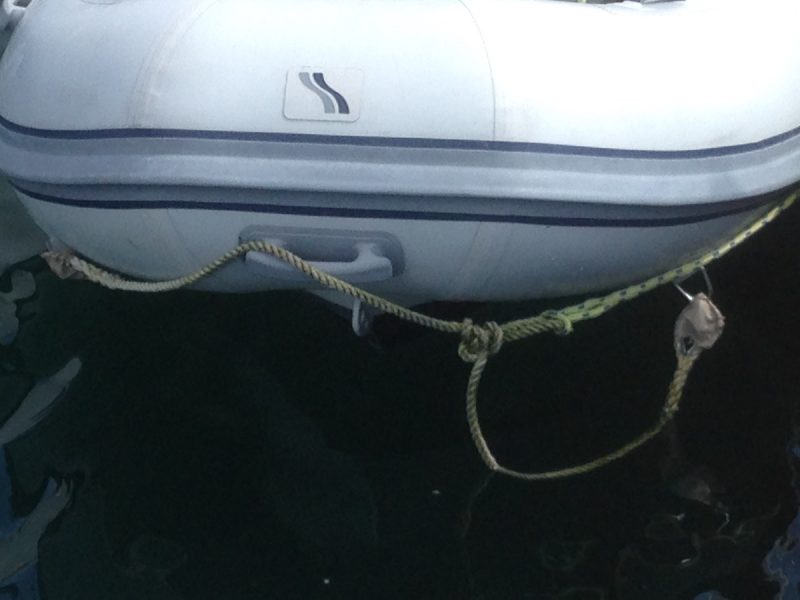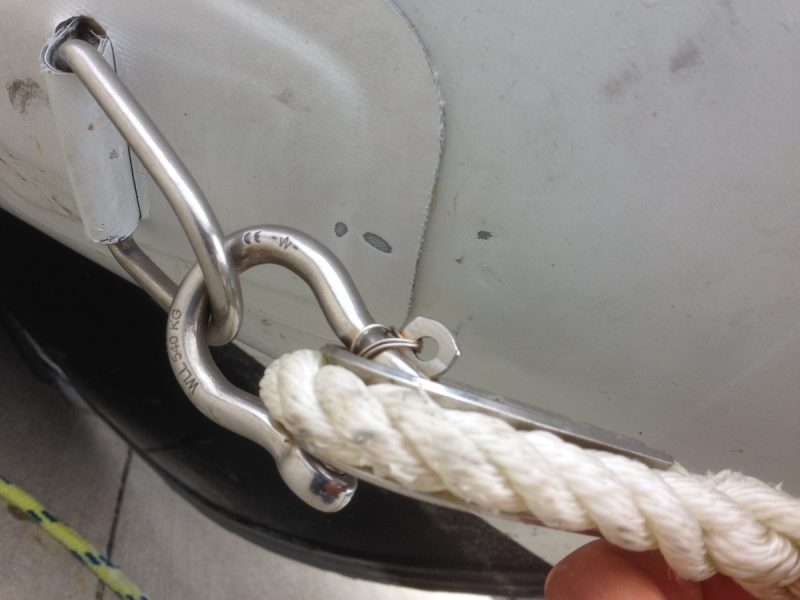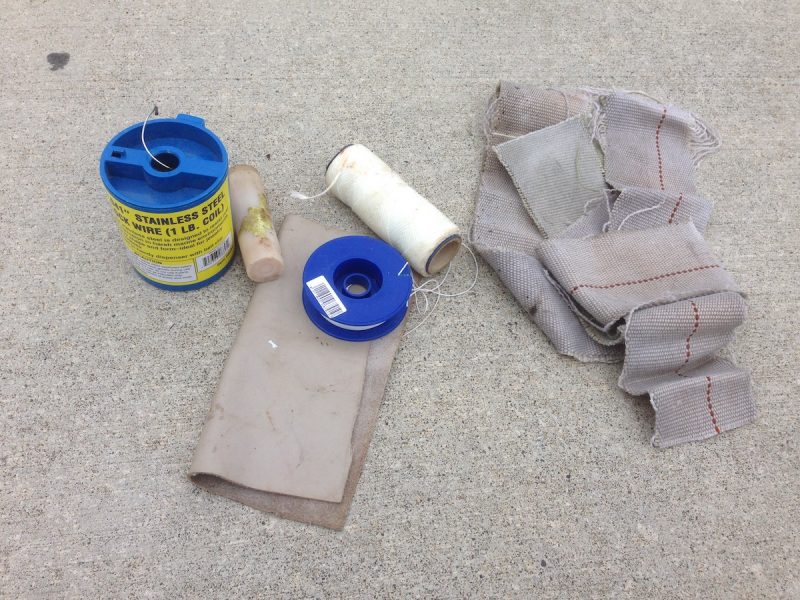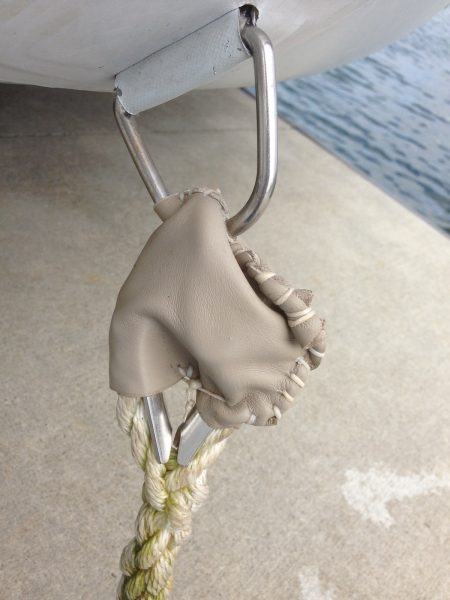
Chafe Is Your Enemy
We’ve heard the mantra before, “Chafe is your enemy.” I thought this upon noticing the tow bridle for a friend’s inflatable dinghy was rubbing at its attachment points. It was early in 2019, and the mothership would have a very active season with the dinghy in tow at all times, so I thought I should mention it to him. Since he was doing some general maintenance that day, I offered to come up with a protective solution for him.
He was on a guest dock without access to a chandlery and other services, so we discussed the materials that were on board for repairs. He had some old fire hose, leather, seizing wire and waxed twine. There were tools aplenty, so I grabbed some pliers, wire cutters, sail needles, and a shackle key.

I pulled the dinghy onto the dock and inspected the bridle setup more closely. I first noticed the shackles used to attach it. They were oriented so that the pins’ heads were in the “up” position. I removed the seizing wire and the pins and rotated the shackles 180 degrees. I put them back together, immediately recognizing this was a better orientation, as it faced the hard-angled edges downward. This simple adjustment vastly improved the situation.

The shackles would still make contact with the dinghy under tension, so I wanted to add sleeves over them. At first, I envisioned using some of the old firehose, which could be slipped over and sewn on, but what was available to me were previously-cut remnants. The hose wanted to unravel as I worked with it, and the cuts were not the right size. It was not a good option.

I moved on to the leather and spent a few minutes fitting and refitting, trying to see how best to make it work with what I had. My supply was limited, and the junction of the dinghy ring, shackle, and thimble made an awkward chain. I cut rectangular pieces to fold around the shackle, sewing them on with the waxed twine and a whipstitch. Since the shackle connects the ring with the eye splice and thimble, encapsulating the assembly entirely would require part of it to be covered by the leather. I was able to stitch around everything, which would keep the leather chafe guard from sliding up or down.
When I finished, I was not impressed with its beauty, but was confident it would serve its purpose. My friend, the mothership, and the dinghy went off for their summer adventures throughout the Pacific Northwest, and I went off on mine. Recently, a year later, I bumped into him and the boat in Port Townsend. I took a quick look to see how the chafe protection was holding up and serving its purpose. The leather guards were still securely in place, halting further wear on the dinghy.

The importance of regular inspections cannot be stressed enough. Chafe on boats can be an ongoing battle. Constant motion and changing weather conditions can mean what is good one day may not be the next. Whether it be a towing bridle, docklines, sheets, halyards, or fenders (the list can go on and on), recognizing it is first. It might be as simple as adjusting a line or block. But if you need to add a guard, keeping leather, stitching twine, and one of my favorites, old lengths of vinyl or rubber water hose, onboard can prevent expensive and dangerous chafing. There are prefab items you can purchase for chafe protection, and these may cater to certain typical situations, but not to all. Be prepared to act on the spot when you see a problem.
When you need to fix something in a pinch, The Resourceful Sailor hopes to give ideas on how to make this happen. Remember, keep your solutions safe and prudent, and have a blast.

always useful & good tips for the avid sailer
I just eyesplice the bridle directly to the eye — no shackle
Yes, that makes sense for a permanent bridle attachment. Since this was someone else’s set-up and they may have had their own reasoning for it being so, I left the shackles in place. The mothership was a 51 foot boat that often chartered passengers and towed two dinghies. I suspect they have changed out the dinghies at times but reused the bridles. Thanks for reading.